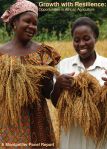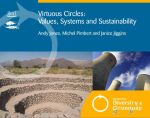SLP has been strengthening links with different academic institutions. The result of these links has been a small set of internships, BSc or MSc thesis with various universities. Research topics are diverse trying to investigate the complexity of mixed crop-livestock farming systems from different but complementary disciplines, tools and scales. Topics include: biomass production and management; chronosequences, land-use/cover and soils evolution; and remote sensing, NDVI analyses and R scripting.
Crop residue management and farm productivity in smallholder crop-livestock system of dry land North Wollo, Ethiopia (Hailu Terefe, Wageningen University, The Netherlands).
The objective of this study is to explore and analyze crop residue and manure management practices and their influence on farm productivity. Data collection and analyses include farmer resource allocation and socio-economic by semi-structured questionnaire; biomass production, N content and digestibility of crop residues and soil nutrients; and crop-growth simulations to explore the influence of crop residue management use on farm production. The results show that nutrient contents and physical structures of arable plots are declining. Modelling results suggest that to reverse this situation, farmers should retain about 70% of crop residues in the field; but retention should ensure incorporation into the soil. To achieve this strong interventions are needed.
Pdf document available from ILRI website
Development of an open source tool to analyze Vegetation Index from Remote Sensing data (Romain Frelat, INSA, France).
During this internship, I have developed a free package in R to conduct automated analysis of Normalized Difference Vegetation Index (NDVI) from different optical satellite instruments (AVHRR and Spot Vegetation). Land Surface Phenology metrics can be easily computed from points or polygons generated either in GIS software (shp) or Google Earth (kml). Metrics and vegetation anomaly maps are calculated for every cropping season to support the study vegetation dynamics in agricultural landscapes.
Pdf document available from ILRI website
R package available from CRAN
Evolution de l’occupation des terres en lien avec les caractéristiques physico-chimiques du sol dans un village pres de Nekemte, Ethiopie (Matthieu Crespin, UCL, Belgium).
C’est dans ce but que ce travail, réalisé à l’échelle du village, devrait permettre de quantifier et de comparer la qualité des sols pour des occupations et des situations topographiques différentes : cultures, pâturages, forêts d’une part et vallées, pentes et sommets d’autre part. Il devrait également permettre de tracer l’évolution de la fertilité pour des sols de forêt jusqu’à des sols convertis à la culture et ce pour trois groupes d’âges différents.




